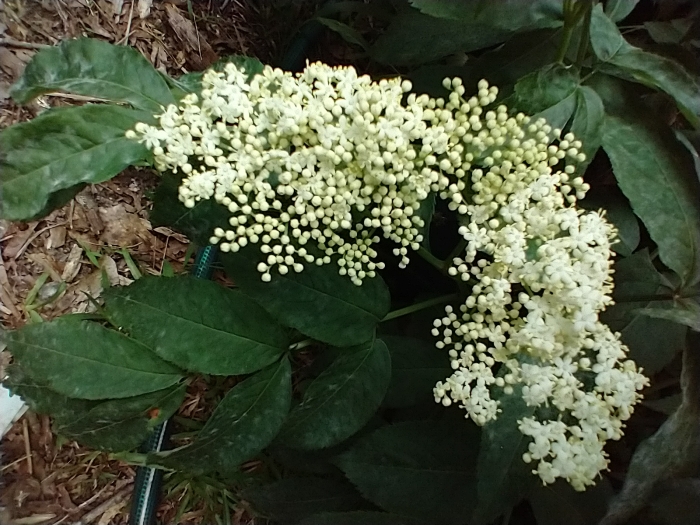American Black Elderberry
(Sambucus canadensis)
American Black Elderberry (Sambucus canadensis)
/
/

Philiptdotcom
CC BY-SA 4.0




















































































Estimated Native Range
Summary
American Black Elderberry is valued for its ornamental flowers, edible fruit, and ease of maintenance. It is often used in naturalized plantings, as a hedge, and for erosion control due to its suckering habit. It is also cultivated for its berries, which are used in jams, wines, and medicinal products. Elderberry prefers full sun to part shade and adapts to a range of soil types, provided they are well-drained. It is relatively low-maintenance but can be susceptible to pests like borers and diseases such as powdery mildew. Pruning is recommended to maintain a tidy appearance and promote vigorous growth.CC BY-SA 4.0
Plant Description
- Plant Type: Shrub
- Height: 6-12 feet
- Width: 6-12 feet
- Growth Rate: Rapid
- Flower Color: White
- Flowering Season: Spring, Summer
- Leaf Retention: Deciduous
Growth Requirements
- Sun: Full Sun, Part Shade
- Water: Medium
- Drainage: Fast, Medium, Slow
Common Uses
Bee Garden, Bird Garden, Border Plant, Butterfly Garden, Deer Resistant, Edible*Disclaimer: Easyscape's listed plant edibility is for informational use. Always verify the safety and proper identification of any plant before consumption., Erosion Control, Fragrant, Hummingbird Garden, Low Maintenance, Rabbit Resistant, Showy Flowers, Street Planting, Water Garden
Natural Habitat
native to a variety of habitats including moist, well-drained soils of forest margins, stream banks, and open areas across the the Eastern United, Mexico and Central America
Other Names
Common Names: American Elder, Canada Elderberry, Common Elderberry, White Elder, Sirop Blanc, Sureau Blanc, Sureau Du Canada, Amerikaanse Vlier, Kanadischer Holunder, Sauco De Canada
Scientific Names: , Sambucus canadensis, Sambucus nigra subsp. canadensis, Sambucus nigra var. canadensis, Sambucus mexicana, Sambucus glauca, Sambucus orbiculata, Sambucus canadensis var. canadensis, Sambucus simpsonii, Sambucus canadensis var. laciniata
GBIF Accepted Name: Sambucus canadensis L.